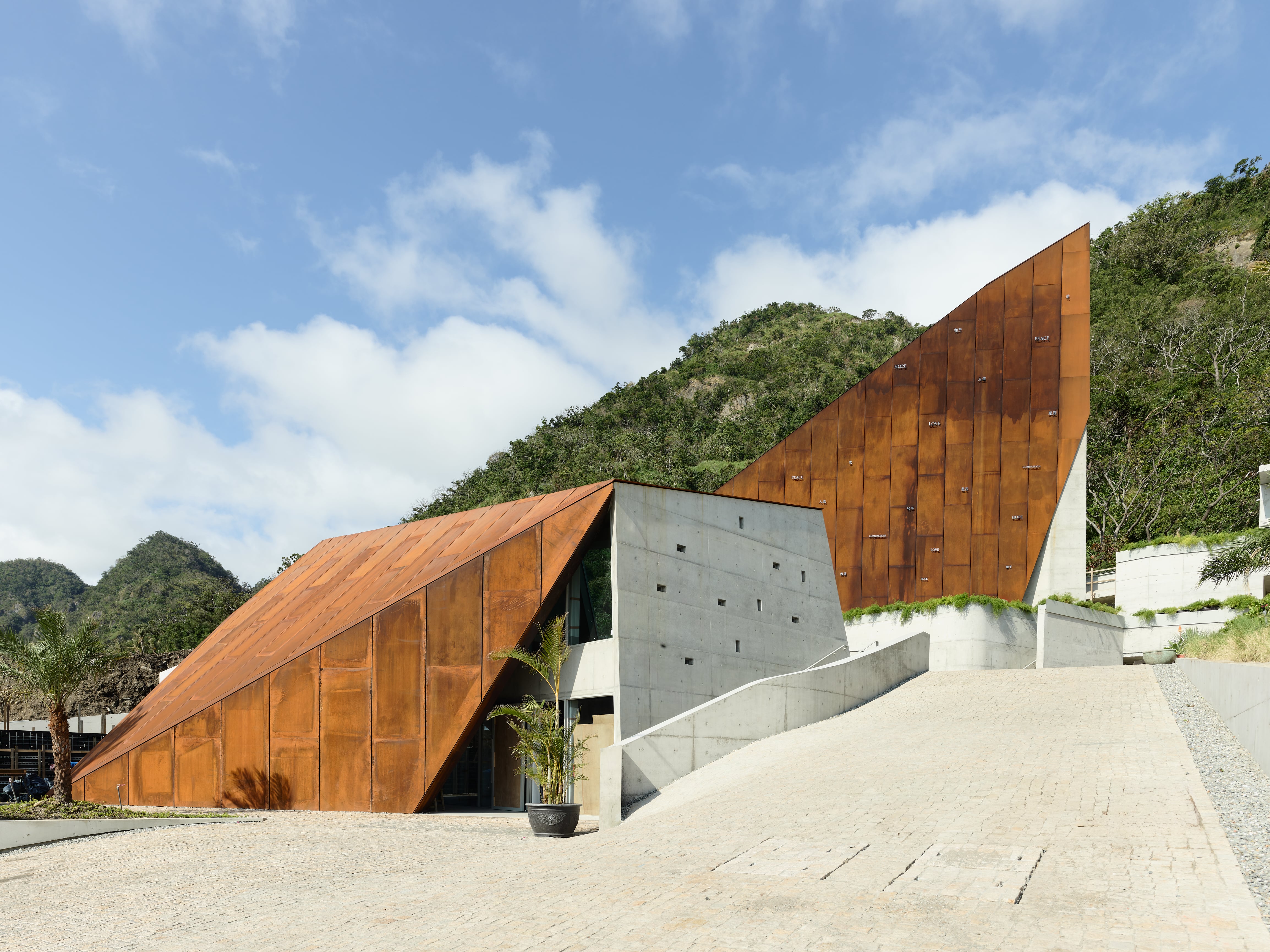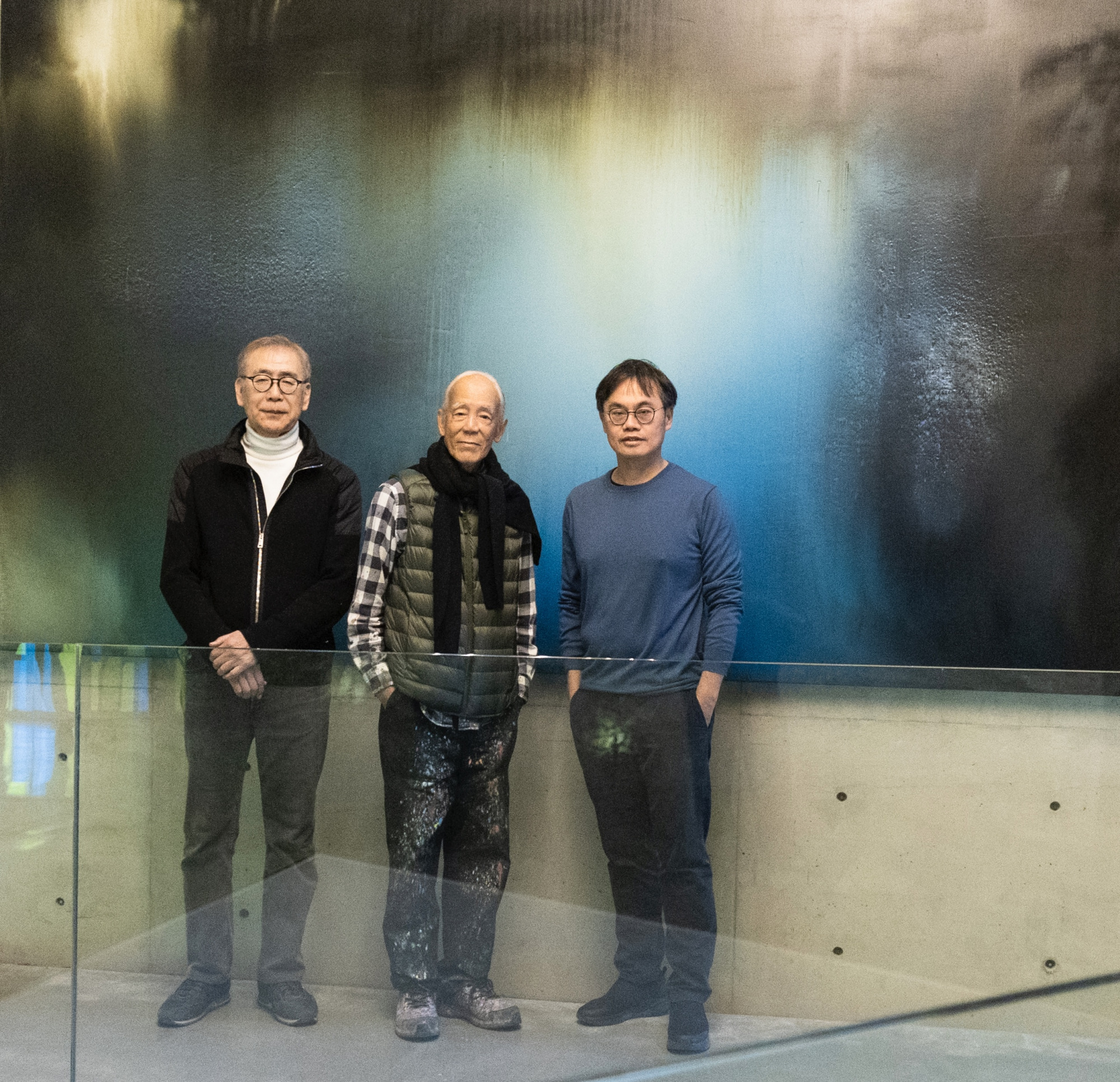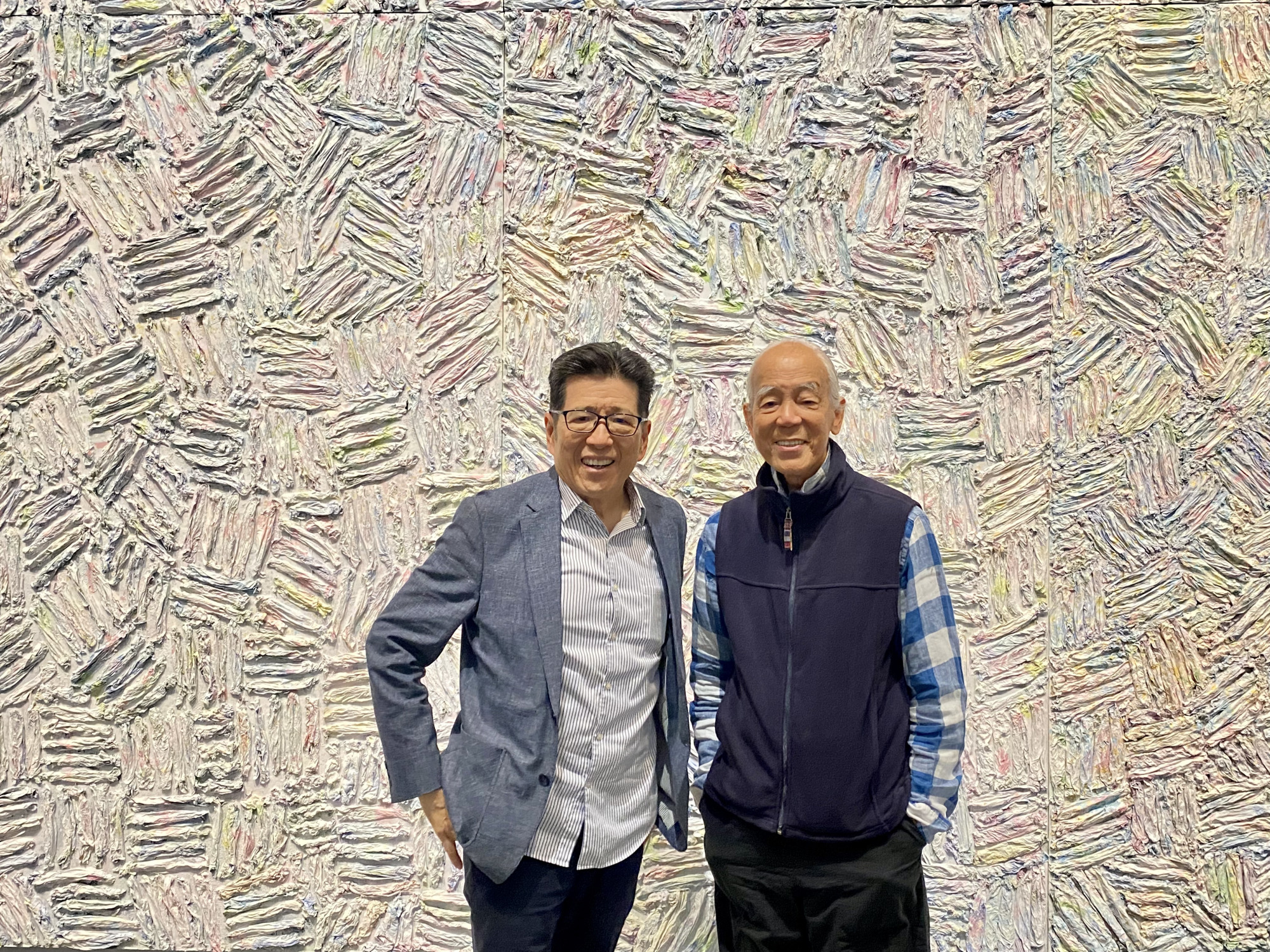
>> Download press release text and images | Kindly review the copyright notice before use. When using images, please follow the credit indicated in the file name: either "© Paul Chiang Art & Culture Foundation" or "Photo courtesy of Paul Chiang Art & Culture Foundation / Photography: Studio Millspace. All rights reserved."
Nestled between the mountains and the sea, the "Paul Chiang Art Center" (hereafter referred to as the Center) in Jinzun, Taitung, will finally open on March 15 after years of anticipation. Located by the Pacific coast, the Center was expanded from the former studio of renowned artist Paul Chiang. This masterpiece, harmonizing nature, art, and architecture, was co-designed by architect Yu Han Michael Lin, who practices in both Taiwan and Germany, and Paul Chiang himself. Stanley Yen, co-founder of the Center, serves as its director. The inaugural exhibition is curated by internationally acclaimed art critic Fumio Nanjo, currently a special advisor to the Mori Art Museum in Japan, with artist Jason Chi as co-curator.
Every corner of the Center reflects Paul Chiang’s aesthetics. At 83, he continues to create daily, with countless imaginative ideas he wishes to explore. This land embodies his artistic journey over more than a decade since he moved to Taitung. Visitors can feel the immense creative energy of the artist, relax at "Café Debussy" overlooking the Pacific, or, on clear days, admire the view of Green Island by the "Serenity Pond", experiencing the light, air, ocean, and flora that inspire Paul Chiang’s art.
When Architect Meets Artist: The Aesthetic Synergy of Yu Han Michael Lin and Paul Chiang
Years ago, when Yu Han Michael Lin first met Paul Chiang, Chiang expressed his vision for the Center: to seamlessly integrate the beauty of nature into the design, not merely create a space to display art. Thus, the landscape was the primary focus of the planning. The Center consists of five modestly sized buildings that blend into the natural contours of the Coastal Mountain Range. The buildings feature understated exposed concrete and invite ample natural light.
Visitors first encounter the "Kung-Yuan Reception Center" and the "Chenghan Hall" (Gallery 3), with roofs made of corten steel, a material favored by Paul Chiang. Over time, these roofs will develop a profound red-brown patina. The design of these structures was inspired by Chiang’s sculpture "Farm House". Upon seeing it, Yu Han Michael Lin thought, "Perhaps we can turn this into architecture!"—and thus, the architectural concept for the entire Center was born. The Center's logo was also derived from this idea.
"Paul’s works possess spatial qualities on their own; he doesn’t need others’ aesthetic opinions to design a space 'representing him,'" Lin explained. "Our role as architects is to construct a cultural and public art platform that embodies Paul’s spirit within Taitung’s natural environment."

When an International Curator Visits Taitung: The Spark Between Fumio Nanjo and Paul Chiang
Fumio Nanjo first visited Paul Chiang’s studio a decade ago and returned in 2022 for Chiang’s solo exhibition at the Taitung Art Museum. For Nanjo, the tropical vibes of Taitung, its slower pace of life, and the escape from urban social distractions offer a stark contrast to the ambiance of art museums in major cities worldwide.
Strolling through the Center’s landscape between mountains and sea, and visiting Chiang’s music-filled studio, Nanjo was deeply moved by how Chiang’s life and art are seamlessly intertwined. "His works are full of love," Nanjo remarked. The inaugural exhibition, “Light, Beauty, and Purification” (March 15–September 28), revolves around the themes of "The Pursuit of Freedom," "Music and Nature," and "Spirituality and Hope," highlighting light, a core element in Chiang’s creations. The exhibition invites visitors on a journey of beauty, experiencing the evolving states of mind that Chiang has expressed throughout his life.

When Dreamers Meet: Turning a “Daydream” into a Common Cause
In the 1980s, while in East Hampton, New York, Paul Chiang owned a small studio and five acres of land. Inspired by nature’s beauty, he dreamed of opening his studio to the public every summer. After moving to Taitung in 2008, Chiang’s long-buried dream began to revive. There, he met Stanley Yen, chairman of the Alliance Cultural Foundation, and their
shared vision gradually evolved: to establish an international cultural landmark in Hualien-Taitung, connecting this land to the global art scene.
Supported wholeheartedly by his wife, Claire Fan, Chiang and his wife dedicated their life savings and proceeds from art sales to acquire the land. With donations from like-minded entrepreneurs, what was once Chiang’s tin-roofed studio gradually transformed into the present-day Center, overcoming administrative processes, the pandemic’s challenges, and construction obstacles.
"If children can be exposed to art from a young age, the aesthetic literacy of Taiwan’s next generation will surely be different," said Paul Chiang. The Center embodies his aspiration to share beauty with every visitor, a modest contribution to society from an artist.
About Paul Chiang
"I always believe that art can purify the soul." — Paul Chiang
Born in Taichung in 1942, Paul Chiang aspired to be an artist at 15. After graduating from the National Taiwan Normal University’s Department of Art, he pursued further studies in Paris and later spent 30 years in New York. His early works, dominated by shades of gray and black, reflected the hardships of life and his relentless pursuit of artistic perfection. It
was not until he painted "Notre-Dame de Paris" at age 40 that he felt assured of his identity as an artist.
After returning to Taiwan in 1998, he created iconic series such as "Hundred Year Temple" and "Silver Lake." In 2008, he moved to Taitung, where nature inspired a dramatic transformation in his style—from dark and dense to vibrant and radiant—resulting in celebrated series like "Pisilian," "On Wings of Song," and "Jinzun." Classical music has profoundly influenced Chiang’s art, drawing inspiration from composers such as Mahler, Schoenberg, Bach, and Debussy. His works transcend mere visual expression, conveying a sense of infinite depth that extends into his sculptural creations.
"Taitung has given me a second artistic life!" Chiang often exclaims. Inspired by the sea, water, and air of Taitung, his art evolved into a brighter, more liberating style. Through the Center, he hopes to share the vitality and inspiration this land has given him with the world.
Official website: www.paulchiang.org
About the Paul Chiang Art Center
The Center, a decade-long project, is a realization of collective dreams and aspirations. Special thanks go to successive magistrates of Taitung County and their teams, as well as the benefactors who provided crucial support. Without their contributions, this dream could not have become a reality.
Address: No. 132-2, Jinzun, Donghe Township, Taitung County
Open: Wednesday to Monday (Closed on Tuesdays)
Hours: 10:00 AM – 5:00 PM (Last entry at 4:30 PM)
▍Admission by reservation. Reserve Tickets Today!
▍Opening promotional rates available until June 30, 2025.